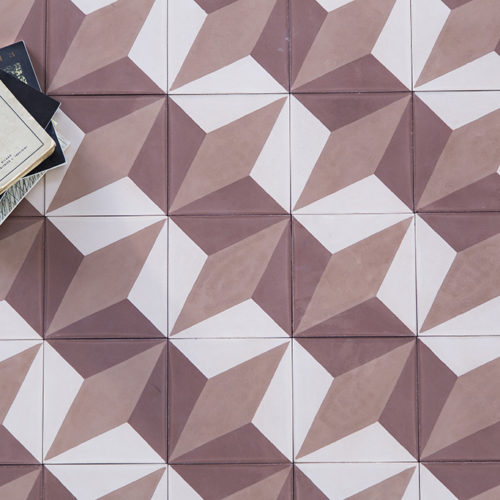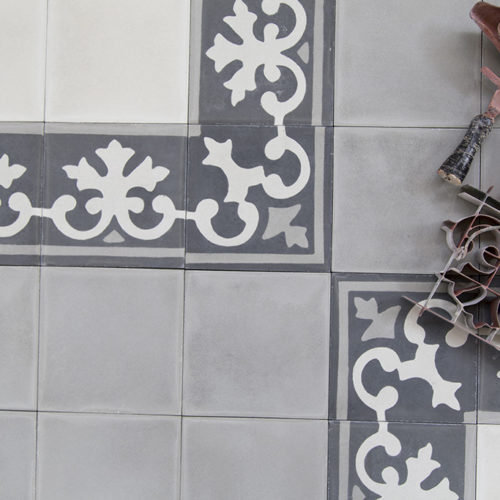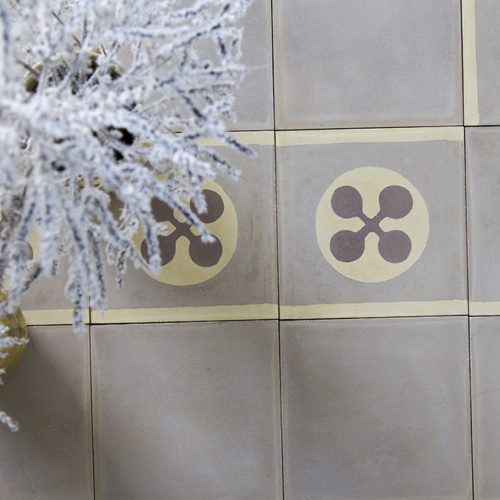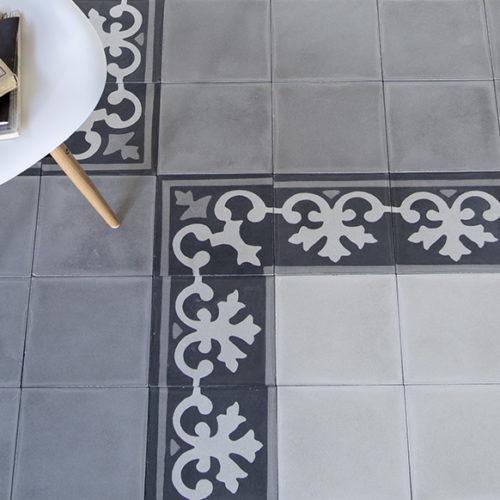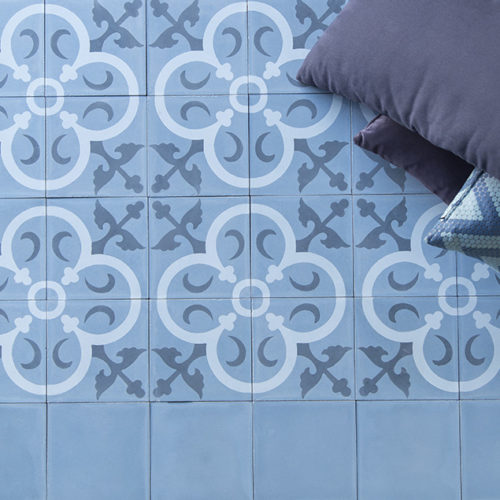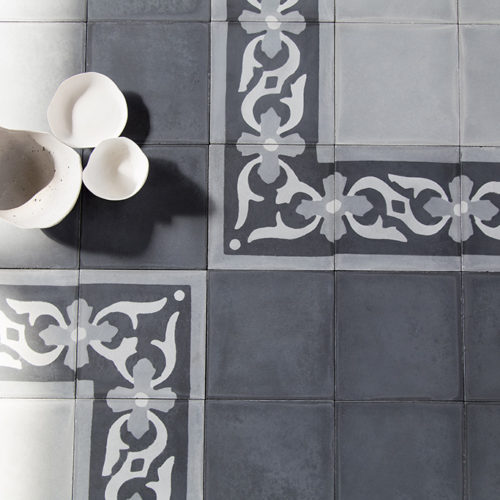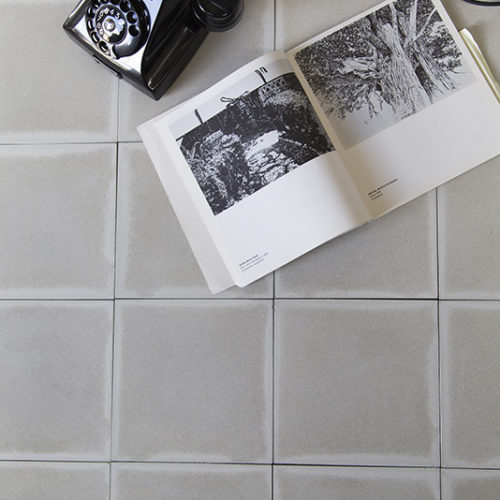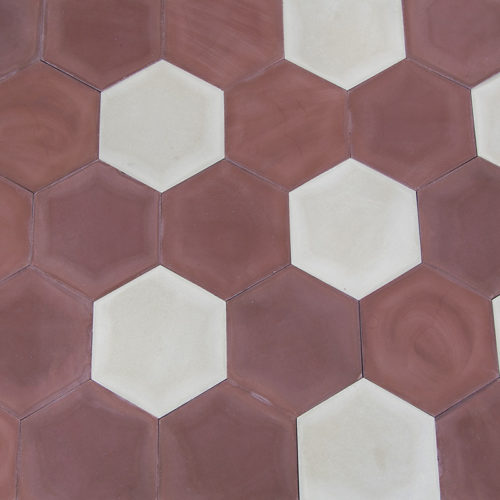
The cement tiles appeared for the first time in between the late 800s and early 900s and turned out to be a
very versatile product thanks to the possibility of creating floor and wall coverings with polychromatic drawings.
Sometimes they can be confused with concrete terrazzo, although the difference is remarkable;
in fact, these ones are composed of a mixture of marble chips or pebbles in clearly visible different sizes,
while the cement tiles are composed of very thin marble powders, cement and natural oxides.
Nowadays, the cement tiles are still produced using the same hand process of the origins,
using the technique of “the divider and the ladle”. The real cement tiles are not sanded or polished
but simply treated by making them water-oil repellent and anti-stain by means of linseed oil.


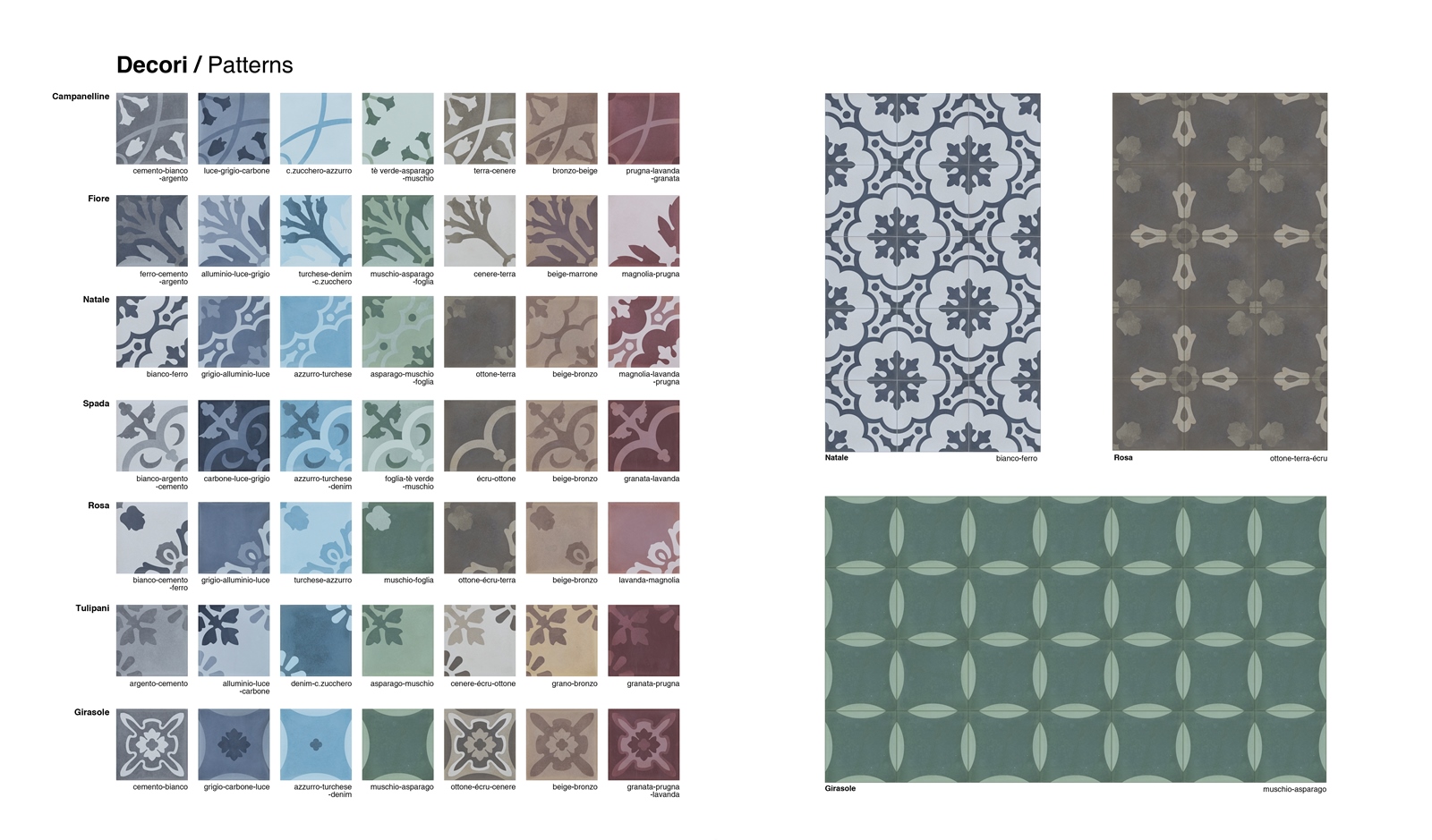


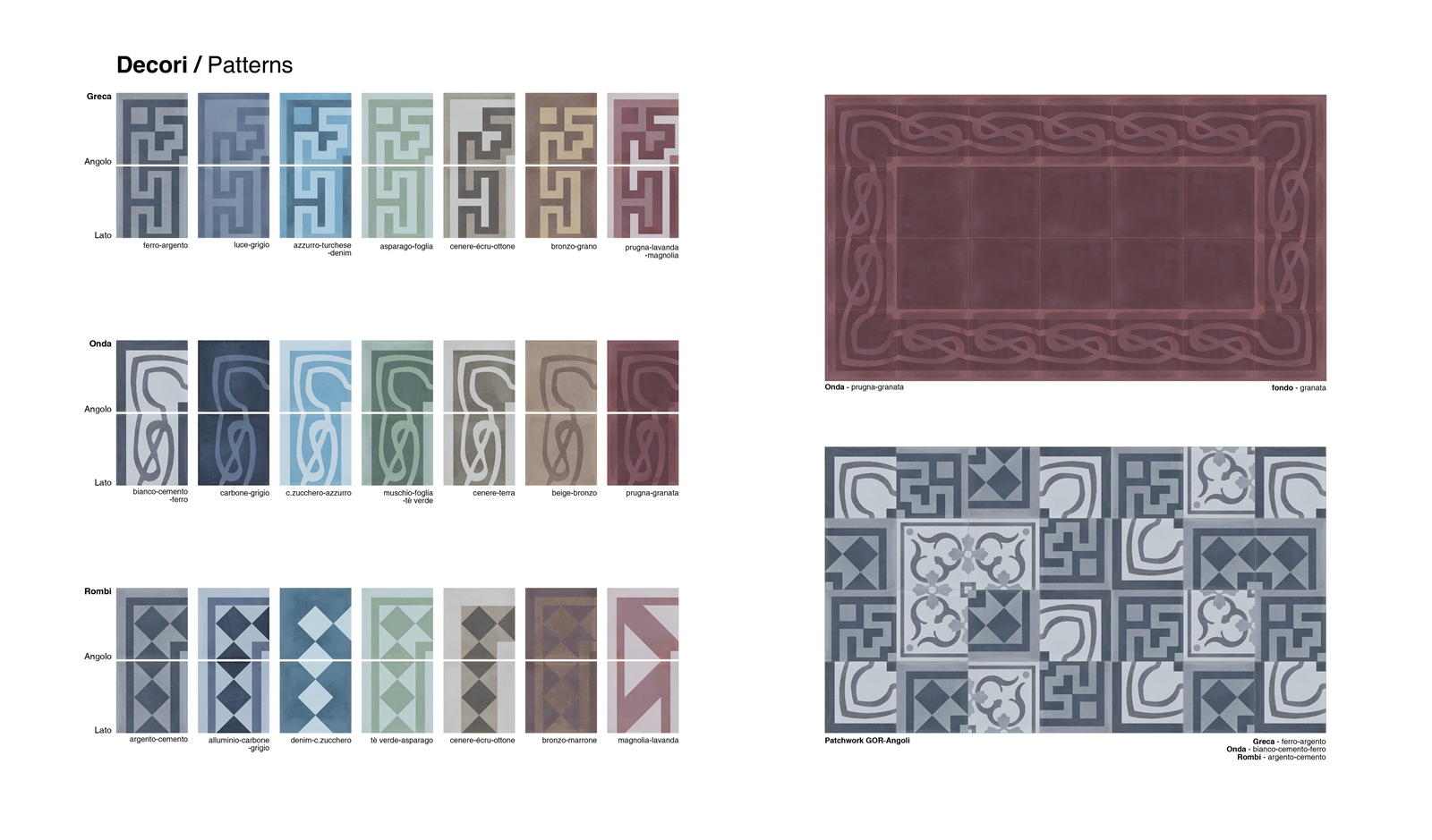


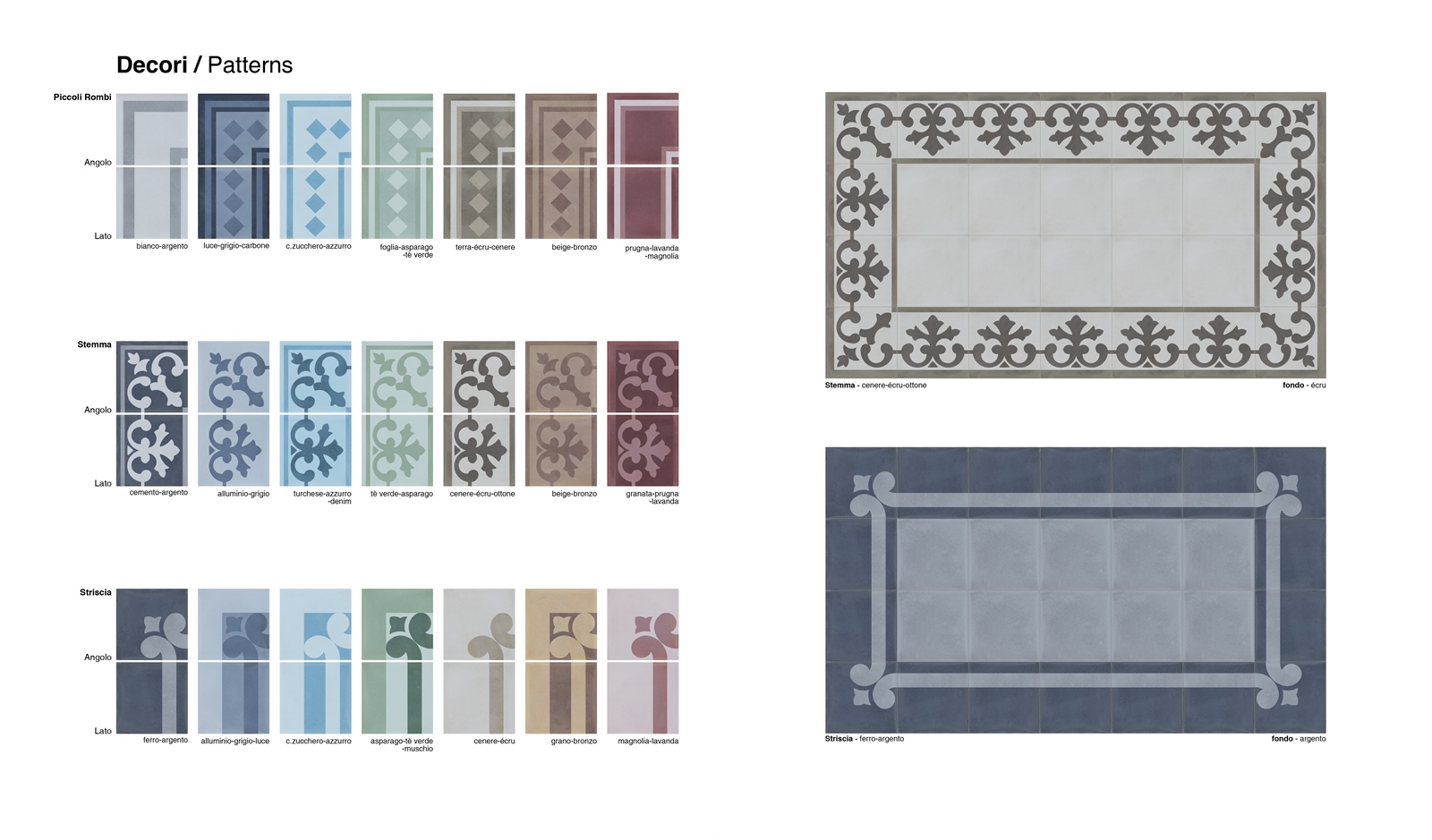


Technical area
Product features
The variation of dimension and colour, the micro holes on the surface are within the tolerance of a handmade manufacturing process and, for this reason, to be considered distinctive features of the product itself.
General warnings
Avoid stocking material open-air to prevent rain water soacking the packaging and damaging the materials.
Install the tiles as soon as possible and do not leave the product at prolongued exposure to sunlight to prevent efflorescence or tone fading on the tile surface.
Directions for use
“The Cement Tiles” collection is intended for internal and covered external use only, because the prolonged exposure to UV rays can change over time the colour tone of the tiles. “The Cement Tiles” floor should not be sanded.
Substrate
The substrate must be compact, flat, free of oil, grease, roughness, dust and debris.
In case of cracks in the screed, it is highly recommended to fix them with suitable products. Allow the cement substrate to dry properly. Carefully remove any possible remaining damp off the installation areas and avoid laying “The Cement Tiles” on wet surfaces.
Installation
It is recommended to install “The Cement Tiles” using cement-based adhesives such as Pavimenti Sansone FLEX-CEM600. Any glue excess either on the tile surface, or on the joint, must be removed. It is recommended to keep 0,04” gap between the tiles.
Cleaning
Cement tiles are not resistant to acids, that even diluted tend to attack them. Do not use acids for the first cleaning after installation. It is recommended to wash the surface evenly, with Pavimenti Sansone CLEAN-DTG cleanser. Use mono brushes with no abrasive disks. Mop up the floor uniformily and clean any remaining liquid.
Rinse with plenty of clean water and let it dry completely.
Treatment
On floor completely dried, and with no humidity halos, evenly spread two water-repellent coats of Pavimenti Sansone IDROREP-RK product, avoiding any product excess, then let it dry. Carry out all operations by qualified installers only. Try the tiles before installation.
Grouting
For grouting it is recommended to use the FUGA-CEM product by Pavimenti Sansone. It is advisable to grouting by qualified personnel.
Finishing
After cleaning the floor off any grout remains, lay an extra coat of water repellent IDROREP-RK product uniformly. Let it dry. After drying, finish it with a further coat of wax, following the wax manufacturer’s instructions.
Regular maintenance
Use neutral detergents. Never bleach or use aggressive acids or alkali cleaning agents. The surface should be waxed regularly, following the wax manufacturer’s guidelines.
Weight and dimensions
Square
Thickness
Weight
Pieces per pallet
Quantity per pallet
Weight per pallet
Hexagon
Thickness
Weight
Pieces per pallet
Quantity per pallet
Weight per pallet
8”x8”
~ 8”
~ 1.6 kg
500
20 mq
~ 800 kg
8”x9”
~ 8”
~ 1.5 kg
580
20 mq
~ 870 kg
Technical features
Length and width
Thickness
Straightness of sides
Identification
Characteristics
Physical properties
Resistance to dynamic loads
Rbk
Breaking load
Wear resi stance
Toxicological information
Water absorption (treated tile)
~ 0.2 %
~ 0.2 %
~ 0.2 %
CM1 Cement, sand and marble
High chemical and physical resistance to environmental polluting agents _ High resistance to UV rays
Washable _ Installation temperature from +5° C to +45° C
covers a wide range of vibration stresses, given the homogeneity of the material
500 kg/cmq
600 kg/cmq
85 kg/cmq
None
0.1 %
Installation products and maintenance
Detergent
Grout
Water repellent
Adehesive
Joint
CLEAN – DTG
FUGA – CEM
IDROREP – RK
FLEX – CEM 600
1 mm




